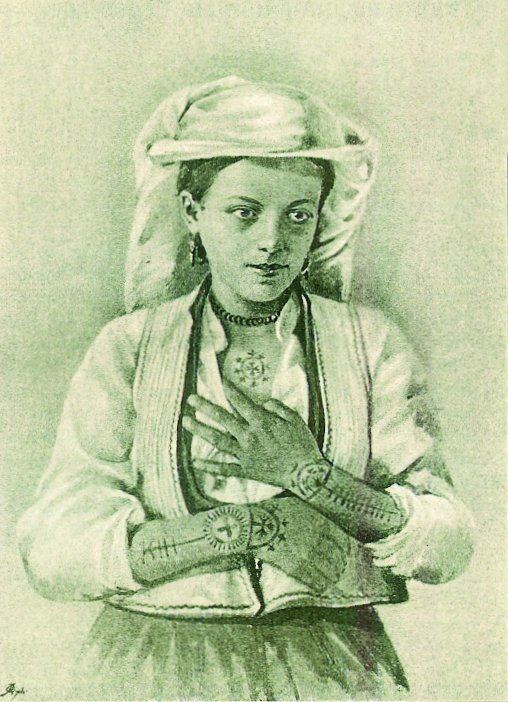 | ||
Christian tattooing in Bosnia and Herzegovina was a widespread custom among Roman Catholics during the Ottoman rule over Bosnia and Herzegovina (1463–1878) and up until the 20th century. Catholics tattooed their children in order to save them from devşirme, while women were tattooed in hopes of avoiding enslavement.
The custom is thought to predate the Slavic migration to the Balkans and even Christianity. In the 1st century BC, the Greek historian Strabo mentioned tattooing among inhabitants of this area, along with another Illyrian custom. Archaeologist Ćiro Truhelka researched these types of tattoos in the late 19th century, becoming one of the first to write about them and to illustrate them.
Bosnian Croat women in some parts of the country tattoo their hands and other visible parts of body (such as brow, cheeks, wrist, or below neck) with Christian symbols and stećak ornaments. This can be seen today, not only in Bosnia and Herzegovina, but among Bosnian Croat women living abroad.
